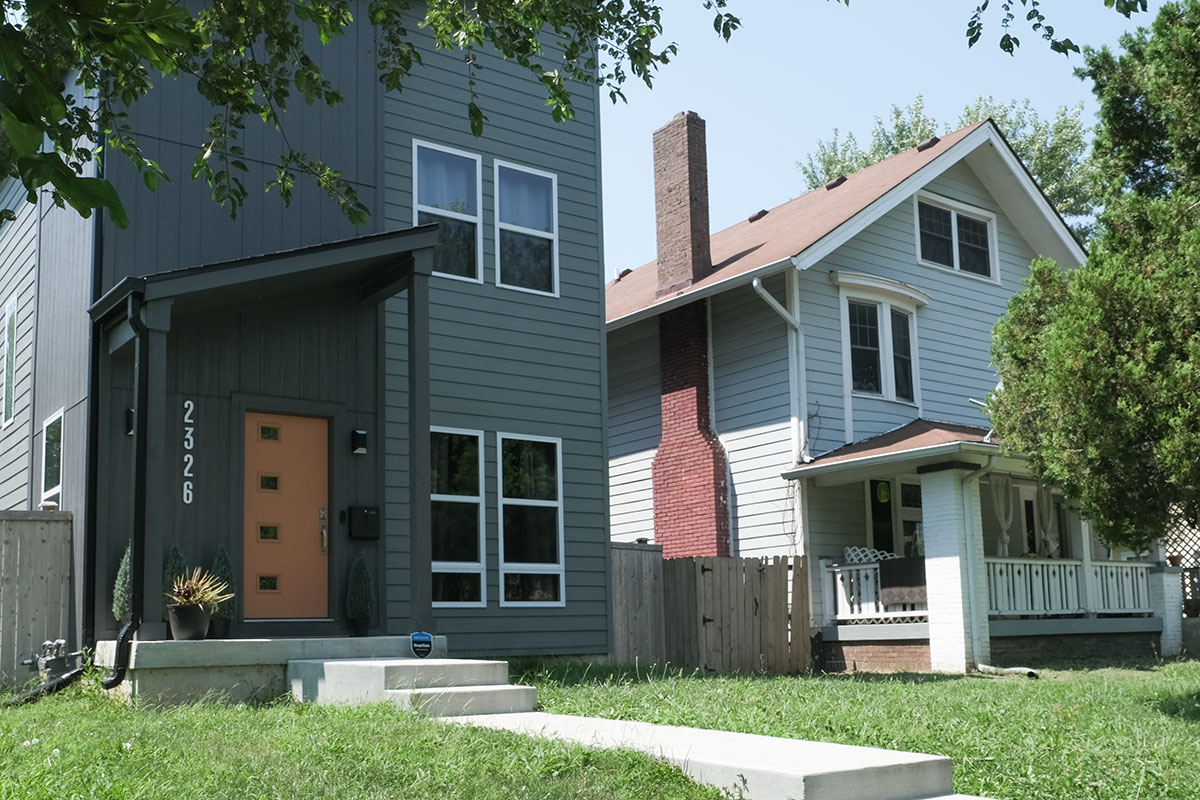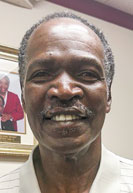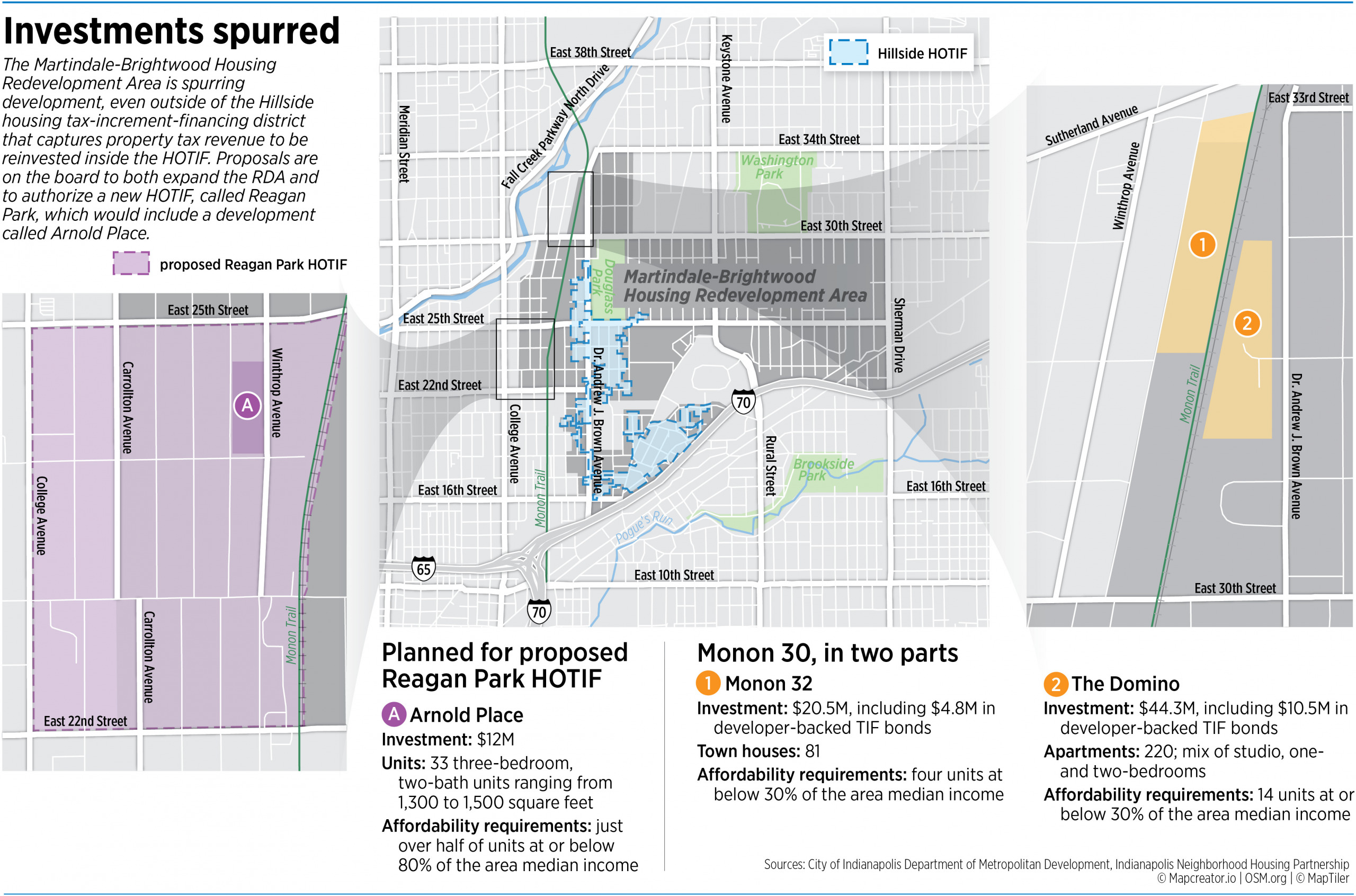Subscriber Benefit
As a subscriber you can listen to articles at work, in the car, or while you work out. Subscribe NowIn the 1990s and fresh from his military service in Germany, the Rev. Willie Sparks moved into a home in Reagan Park.
He said the majority Black neighborhood in the Martindale-Brightwood area was run-down, with little hope of an economic resurgence.
Now, driving through the area in his white church van, Sparks points to “for sale” signs, noting the increased buyer interest in the neighborhood’s accessibility to the Monon Trail and the easy, 2-mile trek to downtown.
Change is coming quickly. House-flippers are turning run-down lots into brightly colored offerings. White families are moving in. Home investors, often from out of state, are buying available housing, and some current residents have fears of being priced out of the neighborhood.
However, Reagan Park could soon benefit from an economic development tool, called a housing tax-increment-financing district, or HOTIF, that would capture the tax dollars from the new developments to benefit existing residents and potentially help them stay in their homes.
Hogsett administration officials have worked with Sparks, who leads the Reagan Park Neighborhood Association, to create the proposed Reagan Park HOTIF.
The City-County Council will consider the proposal Monday night, and city officials hope the economic development tool will help revitalize the neighborhood without pricing out long-term residents.
Traditionally, tax-increment-financing districts, or TIFs, have allowed the city to siphon away some of the taxes paid in a specific area to subsidize high-profile projects within that area. They are often used for large-scale, pricy projects like the $264 million redevelopment of Old City Hall or the $250 million Indiana Convention Center expansion.
HOTIFs have more restrictions on how their captured taxes can be used, focusing on community improvement for residents. State law also requires that three-quarters of the land in a HOTIF be used for residential purposes; that one-third of existing properties were constructed over 50 years ago; and that at least one-third are either vacant, under government order or tax-delinquent.

The proposed Reagan Park HOTIF would dedicate some of the property tax revenue coming from the neighborhood to a fund for the creation and preservation of affordable housing and for residential infrastructure.
The HOTIF includes 89 parcels and follows the neighborhood’s borders of College Avenue to the west, East 25th Street to the north, the Monon Trail to the east and East 22nd Street to the south.
If the taxing district is approved, the Indianapolis Department of Metropolitan Development will work with the neighborhood to form an advisory committee that provides feedback on neighborhood priorities, according to city spokeswoman Emily Kaufmann.
Sparks, the pastor who has advocated for the economic development tool, plans to be part of that committee.
Driving through Reagan Park and adjoining neighborhoods, Sparks points out the difference between a nearby, newly replaced sidewalk and the crumbling curbs in Reagan Park that he says are in “deplorable condition” and not navigable for elderly residents.
These same seniors would receive funds from the HOTIF through homeowner repair grants, which he said could bring aging homes up to code. He’s hopeful that the HOTIF will be fueled by a significant development project next to his Harvest Christian Fellowship Church.
Arnold Place, a $12 million complex of 33 town houses, is being planned by the Indianapolis Neighborhood Housing Partnership. The three-bedroom, two-bath units would provide homeownership opportunities just below market-rate.
With the HOTIF, some collected taxes would be used for down-payment assistance to lower-income buyers, according to Jeff Hasser, INHP director of strategy for housing partnership.
Initially, Hasser said, the not-for-profit explored a single-site TIF encompassing just Arnold Place’s site, but the neighborhood and city officials eventually bought into a larger vision.
“Ultimately, they were supportive of more of a neighborhood-wide one,” Hasser said.
The project marks the first time the 35-year-old INHP has sought a HOTIF, and Hasser said using it for down-payment assistance is likely a first for the city.
Before beginning his role with the housing partnership three years ago, Hasser spent six years at the Indianapolis Department of Metropolitan Development. He watched and assisted as groundwork was laid for major redevelopment in the area.
In 2021, city officials designated the greater Martindale-Brightwood area as a housing redevelopment zone. The boundaries include Hillside, Martindale-Brightwood, Oakhill and Ralston-Hovey-Arsenal. At the same time, officials approved a HOTIF for Hillside, a neighborhood just east of Reagan Park.
That designation followed two years of work from staff, community organizations and residents.
Amina Pierson, leader of the Martindale-Brightwood Community Development Corp., was one of the neighborhood leaders who crafted the redevelopment plan.
Pierson said creating the housing redevelopment area for the greater Martindale-Brightwood area “set the table on which to put a bunch of plates,” or individual tax-increment-financing districts.
So far, the Hillside HOTIF has collected $437,768 in revenue and spent $200,000, according to the state’s TIF portal. That $200,000 will provide gap funding for the Martindale-Brightwood Community Development Corp.’s plan to develop a 26-unit affordable housing project called Ralston Hills. The project would be town houses, mostly three- and four-bedroom, with a projected total cost of $3 million, Pierson said.
That project is still in early stages, she said, but it was clear from the moment she arrived six years ago that Martindale-Brightwood sorely needed new homeownership opportunities.
Before much work can be done, Hillside Neighborhood Association President Jacklyn McMillan Gunn said, the neighborhood will have to await completion of Citizens Energy Group’s lead pipe replacement project. Once that’s over, Gunn said, a top priority is repaving Dr. Andrew J. Brown Avenue and getting roadway improvements, like speed bumps, that discourage speeding around nearby KIPP Indy Legacy High School.
Along the Monon Trail, north of the Hillside HOTIF, eight firms are working on a $100 million, mixed-use development called Monon 30 in a single-site TIF. The two-part project includes Monon 32, an 81-unit building of attached town houses at 1120 E. 32nd St., and The Domino, a 220-unit apartment building with a mix of studio, one- and two- bedroom units at 3122 Dr. Andrew J. Brown Ave.
The new developments and increased investor interest across Martindale-Brightwood have driven up housing costs. In Fair Housing Center of Central Indiana’s report, “Who Owns Indy’s Houses: A Review of the Largest Single-Family Home Investors,” researchers say list prices for single-family houses have increased rapidly in many neighborhoods of color.
In April 2018, the average home listing price in Martindale-Brightwood’s 46218 ZIP Code was $38,721; in April 2023, the average was $101,820, a 163% increase. The report said some home prices in some low-income neighborhoods increased as much as 262% in those five years.
Rentals have seen the impact, too. For example, a home at 3584 Wallace Ave. rented for $695 a month in 2020 but was up to $1,045 in 2022.
The proposed HOTIF aims to combat displacement of current residents by creating locally controlled affordable housing and renovating vacant structures.•
Please enable JavaScript to view this content.




This is a positive development and should be expanded, if successful. However, until the Hogsett and Mears Administrations get serious about a police presence and successful prosecutions with serious incarcerations for felons, I question whether any economic development in these distressed areas can succeed.
Why would the description include “white” families moving in? Families moving in is what is needed here.